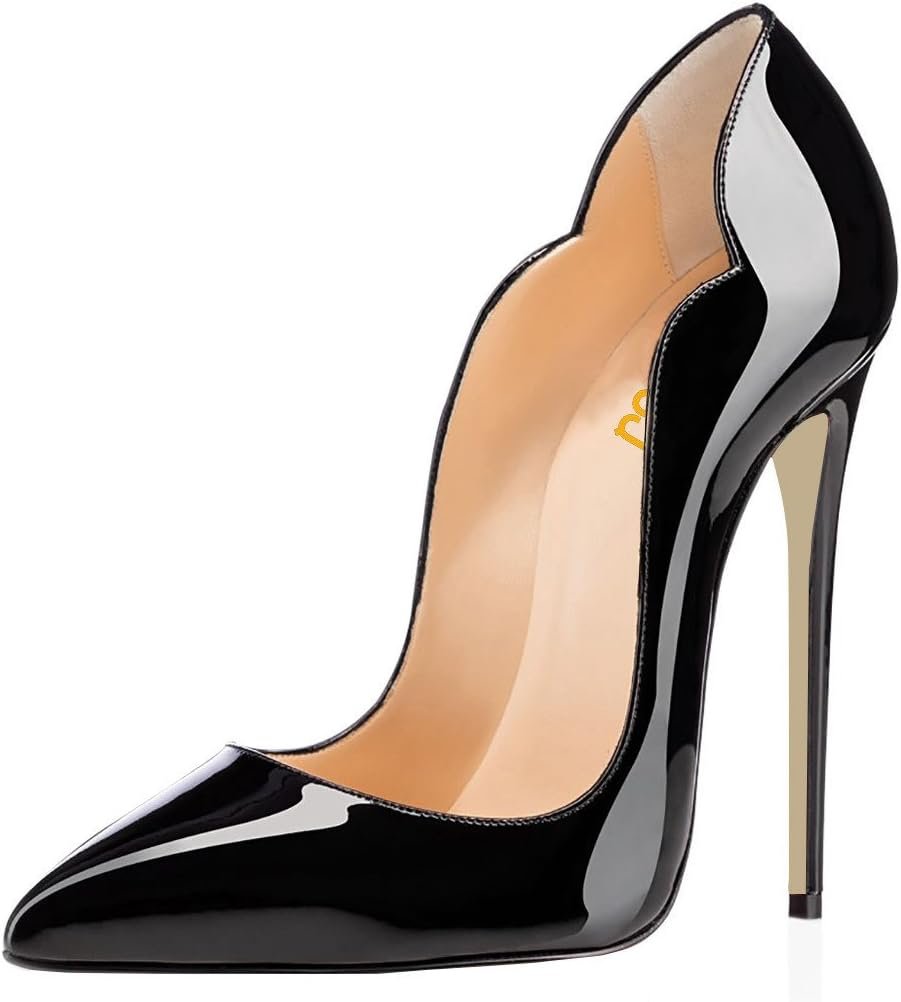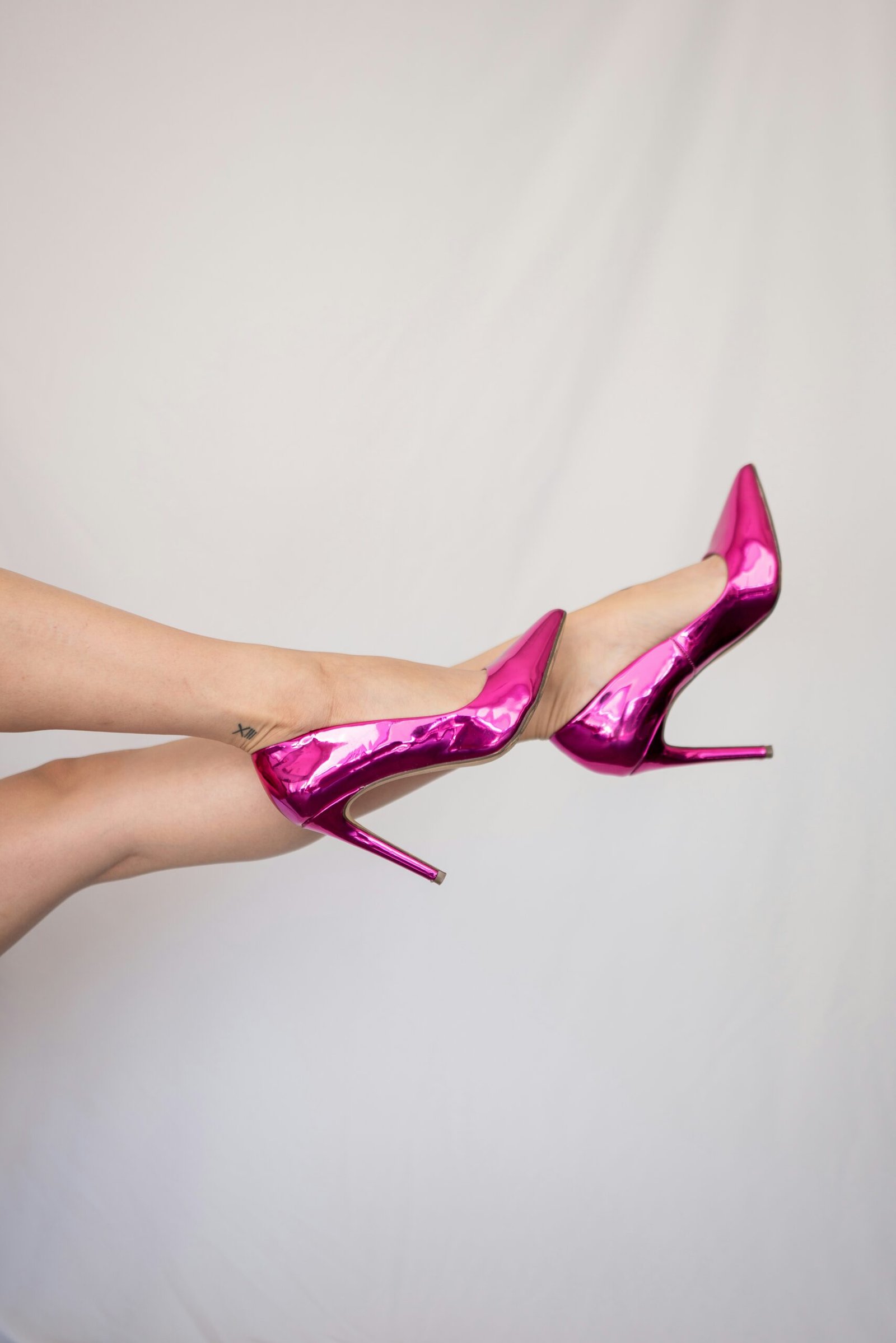The Science Behind the Illusion
The transformative effect of high heels on the appearance of legs is rooted in biomechanics. When a woman wears high heels, the elevated heel shifts her body weight forward onto the toes. This shift in weight distribution forces the calf muscles to contract, resulting in a tightening effect. Concurrently, the Achilles tendon is extended, which contributes to the elongation of the leg’s appearance. This combination of muscle contraction and tendon extension creates a visual illusion of longer, more defined legs.
Moreover, the arching of the foot when wearing high heels plays a significant role in enhancing the leg’s aesthetics. The angle at which the heel is elevated causes the foot to assume a more pronounced arch. This arching effect not only accentuates the curvature of the foot but also extends upward, making the legs appear more slender and elongated. The higher the heel, the more pronounced this effect becomes, thereby enhancing the overall length and tone of the legs.
In addition to the elongation, high heels contribute to the legs’ toned appearance. The angle created by the heel’s elevation requires the leg muscles to engage more actively to maintain balance and posture. This increased muscular activity not only helps in defining the leg muscles but also enhances the overall leg contour, making them look more sculpted and firm. The enhanced muscle definition is particularly noticeable in the calves, which appear tighter and more toned due to the continuous engagement while walking in heels.
Therefore, the illusion of longer, more attractive legs created by high heels is a complex interplay of biomechanical factors. The shift in weight distribution, muscle contraction, tendon extension, and the arching of the foot all work synergistically to produce this visually appealing effect. Understanding these underlying mechanisms helps in appreciating why high heels have become a popular fashion choice for those looking to enhance the appearance of their legs.
Historical and Cultural Perspectives

High heels have a storied history that transcends mere fashion, serving as potent symbols of status, elegance, and sexuality across various cultures and eras. The origins of high heels date back to ancient Egypt, where both men and women donned elevated footwear for ceremonial purposes. Moving forward to the 15th century, Persian horseback riders wore heeled shoes to secure their feet in stirrups, a practice that would later influence European aristocracy.
By the 17th century, high heels had firmly rooted themselves in European fashion, becoming a staple for the elite. King Louis XIV of France further popularized high heels by making them a hallmark of his wardrobe, complete with intricate designs and his signature red soles. This royal endorsement solidified high heels as symbols of power and privilege.
The 20th century saw high heels take on a new dimension, aligning closely with notions of femininity and allure. Hollywood stars like Marilyn Monroe and Audrey Hepburn epitomized the sex appeal and elegance associated with high heels, making them indispensable elements of a woman’s wardrobe. The stiletto heel, introduced in the 1950s, became particularly iconic, embodying both sophistication and sensuality.
Cultural perceptions of high heels vary significantly across societies. In Western cultures, they are often seen as quintessentially feminine, enhancing a woman’s poise and allure. Conversely, in some Eastern cultures, high heels have been viewed with skepticism, perceived as symbols of Western decadence. Despite these differing views, the universal association of high heels with status and elegance remains unchallenged.
The evolution of high heels reflects broader societal changes, adapting to shifting norms while retaining their core attributes of elegance and sexual allure. From ancient rituals to contemporary fashion runways, high heels continue to captivate, embodying a timeless appeal that transcends cultures and epochs.
Psychological Impact and Confidence Boost
The psychological effects of wearing high heels are substantial, often contributing to a notable boost in a woman’s confidence and sense of empowerment. Numerous studies and expert opinions suggest that high heels can significantly influence self-esteem and overall mood. One such study, published in the journal “Personality and Social Psychology Bulletin,” found that women who wear high heels tend to feel more confident and assertive. The elevation provided by heels can make one feel literally and figuratively ‘lifted,’ which translates into enhanced self-assuredness.
Experts in psychology, such as Dr. Jennifer Baumgartner, author of “You Are What You Wear: What Your Clothes Reveal About You,” argue that clothing and footwear choices are deeply tied to self-perception. Heels, in particular, alter a woman’s posture, making her stand taller and project an image of confidence and sophistication. This change in physical stance can trickle down to affect her mental state, often resulting in a more positive outlook and self-view.
Anecdotal evidence also underscores the confidence-boosting power of high heels. Many women report feeling more attractive and empowered when wearing heels. For instance, Sarah, a marketing executive, notes that wearing heels during important meetings makes her feel more in control and capable. Similarly, Rachel, a teacher, shares that putting on a pair of stylish heels transforms her mood instantly, making her feel more poised and ready to face the day.
Testimonials from various women highlight how heels can positively influence their perception of attractiveness and overall mood. The act of wearing heels can be seen as a form of self-expression, allowing women to showcase their personality and style. This empowerment through footwear is not just about the physical aesthetics but also about the mental and emotional upliftment that comes with it.
Choosing the Right Heels for Maximum Effect
Selecting the ideal pair of heels is crucial in achieving the desired leg-lengthening effect. When choosing heels, consider the height that best complements your comfort and style. Heels that range from 2 to 4 inches are typically optimal for elongating the legs without compromising stability. For those who can manage higher heels, a 5-inch stiletto can provide a dramatic leg-lengthening effect, making your legs appear longer and more slender.
The shape of the heel also plays a significant role. Stilettos, with their thin and sleek design, offer a sharp, elongated appearance to the legs. Wedges, on the other hand, provide a more gradual incline, which can be more comfortable for extended wear while still offering a noticeable lift. Block heels strike a balance between comfort and style, providing a stable base that can enhance leg length while allowing for easier movement.
Material choices should not be overlooked. Leather and suede heels tend to mold better to the foot, offering both comfort and a polished look. Patent leather, with its glossy finish, can add a touch of sophistication, making the legs appear even more glamorous. Additionally, opting for nude or skin-toned heels can create an illusion of longer legs by seamlessly blending with your natural skin tone.
Comfort is equally important as style. Look for heels with cushioned insoles and adequate arch support to ensure that you can wear them for extended periods without discomfort. Balancing comfort with fashion ensures that you not only look fabulous but also feel confident throughout the day.
Different types of heels can impact the appearance of the legs in unique ways. Stilettos offer a sharp, elongating effect, while wedges and block heels provide a more balanced lift. Pairing your heels with the right outfit can further enhance the leg-lengthening effect. Pencil skirts, fitted dresses, and skinny jeans can all complement high heels by accentuating the legs’ length and shape. For a more casual look, pairing wedges or block heels with cropped pants or a flowy dress can still achieve an elongating effect while maintaining a relaxed vibe.


